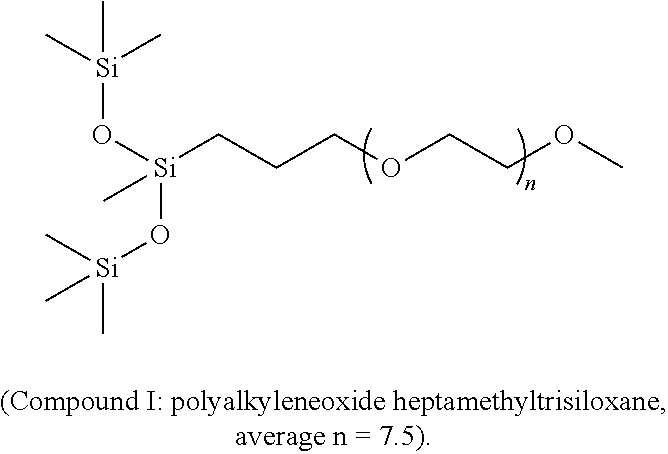Compositions and methods for controlling diabrotica
a technology of diabrotica and diabrotica, which is applied in the field of methods for controlling invertebrate pest infestations, can solve the problems of chemical insecticide use and potential accumulation in the food chain, and achieve the effect of preventing infestation and low nucleotide diversity
- Summary
- Abstract
- Description
- Claims
- Application Information
AI Technical Summary
Benefits of technology
Problems solved by technology
Method used
Image
Examples
example 1
[0271]This example illustrates non-limiting embodiments of sequences useful as target genes for controlling Diabrotica species and for making compositions and plants of this invention, and describes identification of such DNA sequences from Diabrotica virgifera virgifera. It is recognized that analogous sequences can be obtained from any other Diabrotica species referred to hereinabove.
[0272]cDNA libraries were generated from mid-guts of Diabrotica virgifera virgifera (Western corn rootworm, WCR) third instar larvae reared on corn plants, as follows. Disinfected WCR eggs were suspended in a 0.1% (w / v) agar solution and dispensed into petri dishes containing 2% (w / v) agar and filter paper. The WCR eggs were incubated first at 20 degrees Celsius and 60% relative humidity (“RH”) for 3 days and then at 25 degrees Celsius and 60% RH for 10 days. After 13 days of incubation, the eggs were washed from the dishes into sweater boxes containing soil (2 parts Metro-Mix 200: 1 part Redi-Earth; ...
example 2
[0273]This example illustrates a method for non-random selection of target genes. More specifically, this example illustrates a method of selecting a subset of target genes that are present in single- or low-copy-number (i. e., non-repetitive and non-redundant) in a particular genome.
[0274]In general the method includes the step of identifying single- or low-copy-number genes in the chosen genome, or alternatively to identify single- or low-copy-number genes in an orthologous database from related organisms to predict which genes will be single / low copy in the chosen organism. Low-copy genes, and in particular single-copy genes, are unlikely to have their function recapitulated by a paralogue, and are selected as preferred targets for RNAi-mediated silencing. In other words, such genes are likely to represent essential functions, making these genes preferred targets for RNAi-mediated silencing.
[0275]Embodiments of the method include a further step of estimating nucleotide diversity ...
example 3
[0282]The polynucleotides of this invention are generally designed to modulate expression by inducing regulation or suppression of a Diabrotica species target gene and are designed to have a nucleotide sequence essentially identical or essentially complementary to the nucleotide sequence of a Diabrotica species target gene (e. g., SEQ ID NOs:1-450) or to the sequence of RNA transcribed from a Diabrotica species target gene, which can be coding sequence or non-coding sequence. These effective polynucleotide molecules that modulate expression are referred to herein as a “trigger”, or “triggers”. This example describes non-limiting techniques useful in the design and selection of polynucleotides as “triggers” to modulate expression of a Diabrotica species target gene.
[0283]Selection of Polynucleotide Triggers by “Tiling”
[0284]Polynucleotides of use in the invention need not be of the full length of a target gene, and in many embodiments are of much shorter length in comparison to the t...
PUM
| Property | Measurement | Unit |
|---|---|---|
| RH | aaaaa | aaaaa |
| pH | aaaaa | aaaaa |
| pH | aaaaa | aaaaa |
Abstract
Description
Claims
Application Information
 Login to View More
Login to View More - R&D
- Intellectual Property
- Life Sciences
- Materials
- Tech Scout
- Unparalleled Data Quality
- Higher Quality Content
- 60% Fewer Hallucinations
Browse by: Latest US Patents, China's latest patents, Technical Efficacy Thesaurus, Application Domain, Technology Topic, Popular Technical Reports.
© 2025 PatSnap. All rights reserved.Legal|Privacy policy|Modern Slavery Act Transparency Statement|Sitemap|About US| Contact US: help@patsnap.com

